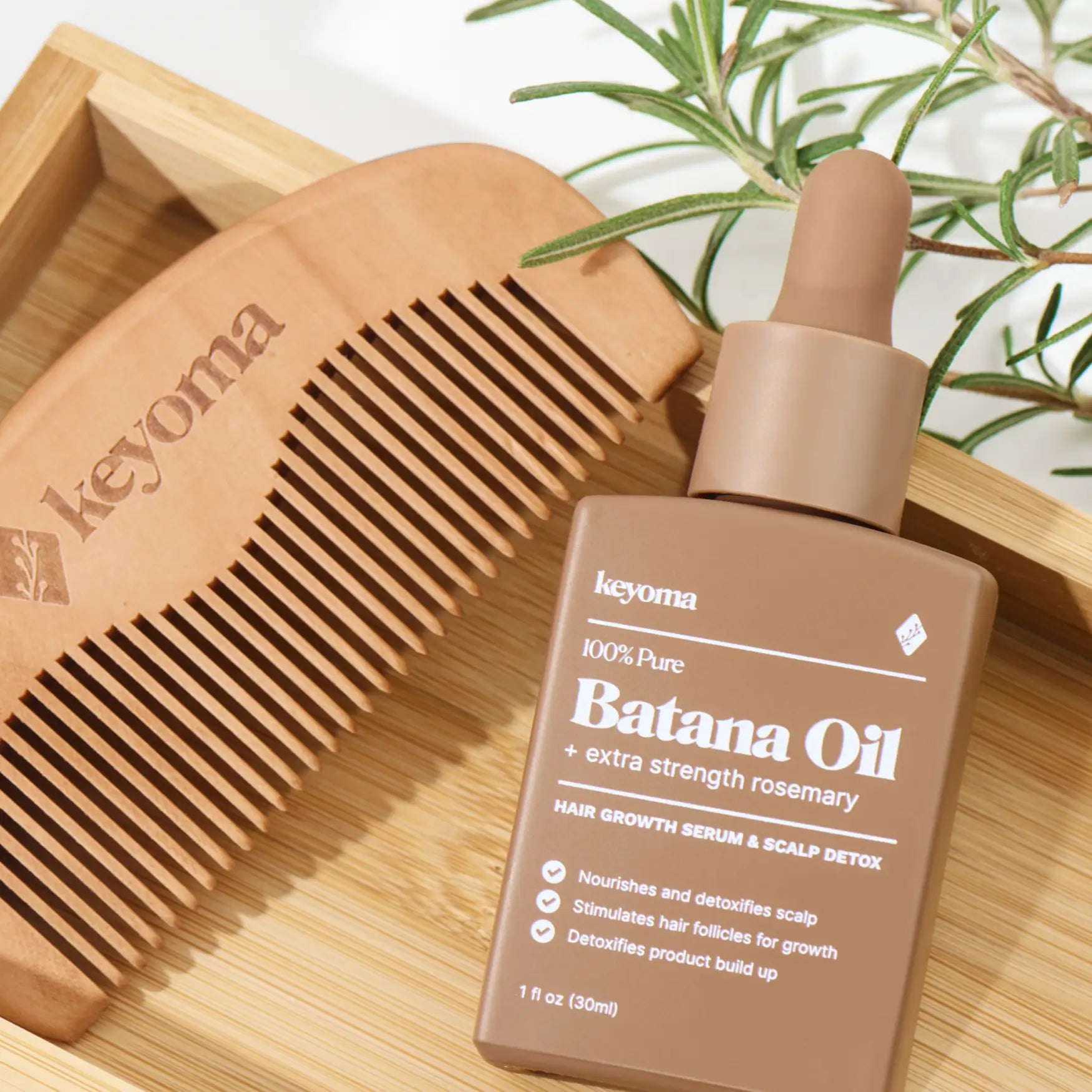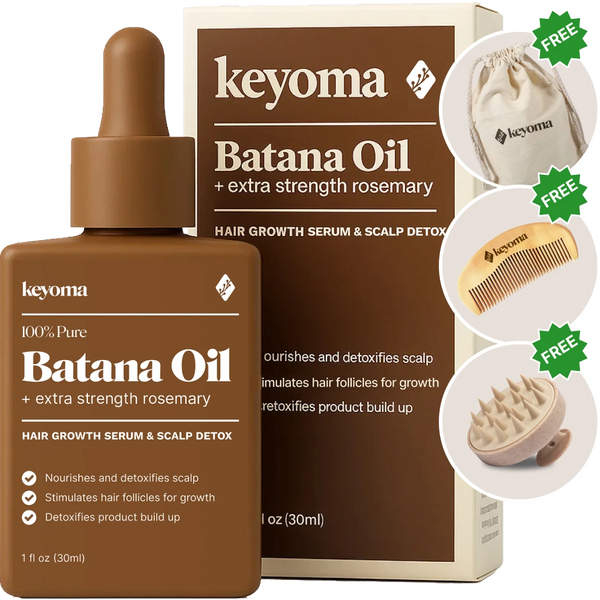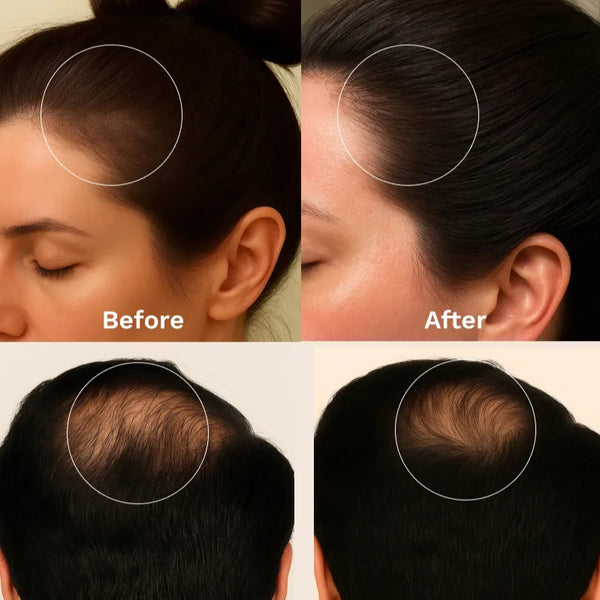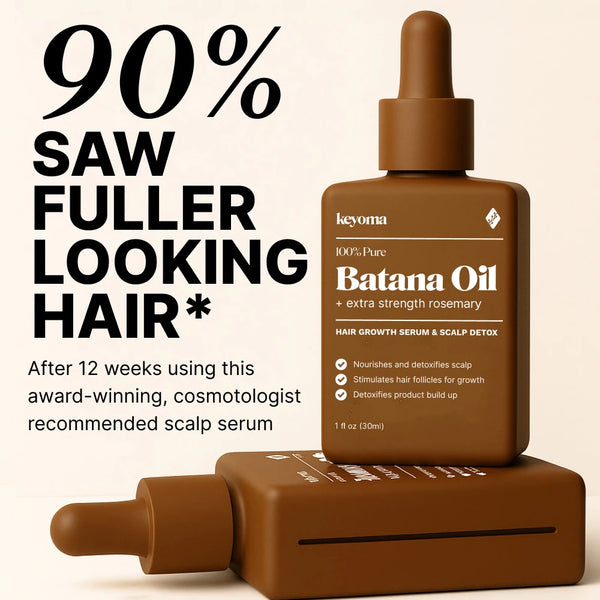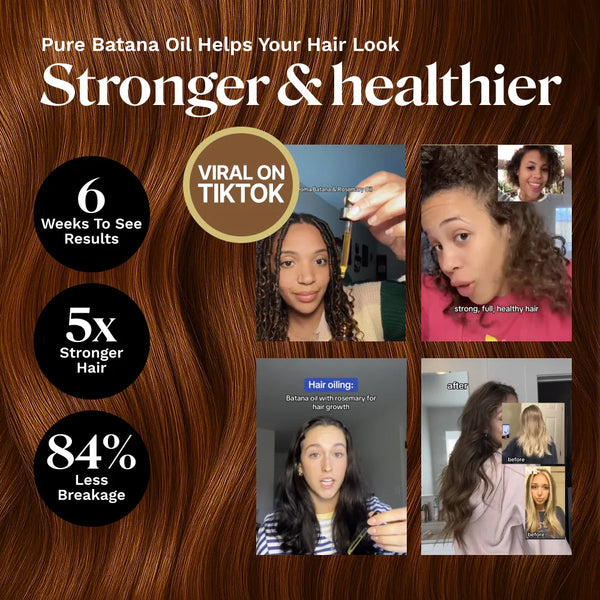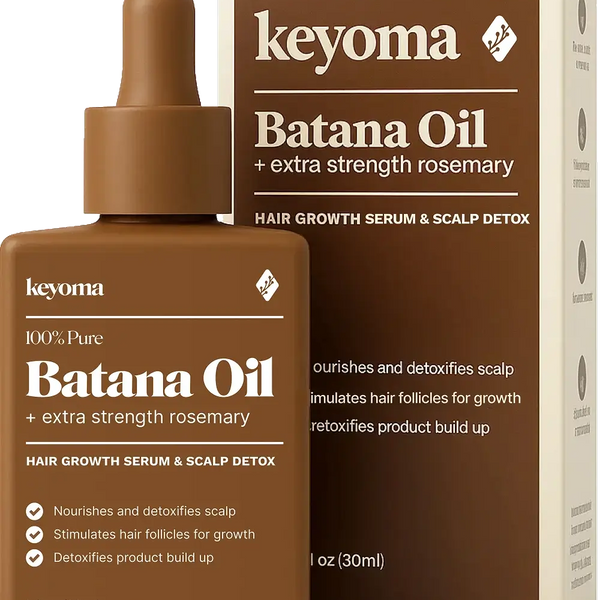In this article
Coarse is a plain way to describe hair strands that are thicker than average in diameter. Coarse hair isn’t an issue to fix or a condition to cure; it’s simply how your genes shape your hair.
If your hair falls on the coarse side, you probably want tips to care for it and make it feel softer and less wiry. Keep going.
Key Takeaways
-
Coarse hair means wider strand diameter, not density, and occurs across textures.
-
Routine centers on hydration: moisturizing shampoos, weekly deep masks, oils, and serums.
-
Limit heat with protectant, use protective styles, and detangle using wide-tooth combs.
-
Coarse hair health depends on genetics, while environment, nutrition, and conditions can change manageability.
What is Coarse Hair?
Hair thickness is density, meaning how many strands you have, while coarseness is the width of each strand. Coarse hair can be straight, wavy, curly, tightly curled, or in between, but its defining trait is strand diameter. These strands are the widest, which also makes them the strongest.
That size is great for fullness and growth potential; still, coarse hair often runs dry, brittle, frizzy, and prone to breakage. So your routine should center on hydration and plenty of moisture. How can you tell if your hair is coarse?
Coarse strands feel substantial between your fingers; you can spot them easily against a contrasting background (often wider than sewing thread), and when you bend one it springs back.
What Causes Coarse Hair

Start with what you cannot change, then consider what you can. One useful anchor: larger, more oval follicles create wider strands with a naturally coarser feel. With that baseline, the role of environment and health is clearer. Spot your texture drivers.
Health Factors (Iron, Calcium, Thyroid, Medications)
Internal health factors play a major role in coarse hair quality and manageability. Iron deficiency can change hair structure and increase brittleness, while calcium imbalances may affect strength and elasticity. Thyroid disorders often shift hair texture, sometimes making coarse hair harder to manage or altering growth patterns.
Some medications can also influence coarse hair traits. Blood thinners, hormonal therapies, and certain antidepressants may affect texture, moisture retention, and overall health. Keeping nutrition in a good place and addressing underlying conditions supports easier management and fewer related issues.
How Genetics and Follicle Shape Matter
The main driver of coarse hair is genetics, especially the shape and size of your hair follicles. Bigger, more oval follicles produce thicker strands with a coarser feel. This inherited hair type comes from your parents and won’t be permanently changed by treatments or products.
Genetic factors also influence the hair’s internal structure, including the medulla (innermost layer), which is typically more pronounced in coarse hair. This predisposition shapes how your hair reacts to styling, chemical services, and environmental stressors. Knowing your genetic baseline sets realistic expectations for your care plan.
Environmental Damage: Sun, Pollution, and Chemicals
Environmental exposure can worsen coarse hair challenges. Prolonged sun can strip natural oils and roughen the cuticle, making the hair drier and frizzier. UV radiation breaks down protein structures inside the shaft, increasing porosity and moisture loss.
Pollution particles collect more easily on coarse hair because of its textured surface, creating buildup that weighs it down and blocks products from absorbing. Chemical exposure from pools, hard water, and harsh stylers can further weaken the protective barrier, intensifying texture issues.
How to Care for Coarse Hair

You’ve pinned down why your strands feel dense and dry. Now turn that insight into care that actually helps. Focus on less friction, gentle cleansing, and steady moisture. As a baseline, wash 2–3 times per week to preserve natural oils while you condition and style with a lighter hand. Set a moisture-first routine.
Use Batana Oil for Moisture
Use Keyoma’s Batana Oil in easy ways. Before shampoo, work 1 teaspoon into dry mid-lengths to end for 20 minutes to soften the fiber. After washing, lock in moisture on damp hair with 2 to 4 drops, focusing on the ends.
Once weekly, try a gentle warm oil session for 15 to 20 minutes, then rinse and condition. I noticed a warm towel helped absorption without leaving heavy residue. For styling, glide 1 to 2 drops to calm frizz and boost shine. If hair feels heavy, use lighter layers and keep oil off the roots.
Choose a Moisturizing Shampoo
Picking a moisturizing shampoo is key for coarse hair care. Look for formulas with hydrating ingredients like glycerin, hyaluronic acid, and natural oils. Sulfate-free choices help because they clean without stripping essential moisture from already dry strands.
Washing less often, usually 2–3 times per week, helps preserve natural oils. When you shampoo, focus on the scalp and let the lather move through the lengths, gently lifting buildup
without over-drying the hair shaft. This approach maintains the moisture balance coarse hair needs.
Deep Condition Regularly
Weekly deep masks help coarse hair stay healthy and manageable. Choose treatments with proteins like keratin and hydrolyzed wheat protein to reinforce the structure, along with moisturizers such as shea butter and argan oil.
Application matters for coarse hair. Coat mid-lengths to ends while avoiding the scalp so roots don’t feel weighed down. Use a wide-tooth comb to distribute evenly, and consider heat or steam to assist penetration in low-porosity coarse hair.
Use Wide-Tooth Combs and Gentle Brushes
Wooden hair brushes and wide-tooth combs are gentler on coarse hair than many plastic tools. A close friend with a sensitive scalp felt calmer using a smooth wooden handle. Use a wide-tooth comb to detangle from the ends upward, reducing breakage. This technique is especially important for coarse hair, which can tangle easily due to its texture.
Natural bristle brushes can move scalp oils along the hair shaft, providing light conditioning for coarse hair. Avoid over-brushing, which increases friction and leads to frizz. Brush only when necessary, starting with a wide-tooth comb for the initial detangle.
Try Co-Washing to Maintain Moisture
Co-washing (using conditioner only) can help if coarse hair tends toward dryness. This method uses a cleansing conditioner or regular conditioner to clean without the harsher stripping of traditional shampoos.
Co-washing supports the natural moisture balance of coarse hair needs. Alternate co-washing with regular shampoo based on your scalp and lifestyle.
Limit Heat and Use a Heat Protectant
Because coarse hair tends to hold less moisture, high heat can be especially harsh. When heat styling is necessary, apply a quality heat protectant that creates a barrier between tool and hair. Look for protection up to 450°F and formulas that include moisturizing ingredients.
Keep hot tools at moderate temperatures when you can, and always start low before increasing. Coarse hair may need a bit more heat than fine hair, but easing up helps prevent extra damage. Limit heat styling to 2–3 times per week to preserve hair health.
Use Protective Styles
Protective styles cut down on manipulation and environmental wear. Braids, buns, and twists keep ends tucked and reduce friction against clothing and surfaces. These choices tend to suit coarse hair’s natural strength and structure.
When creating protective looks, keep tension light to avoid harming hair follicles or causing breakage. Use soft, fabric-covered elastics and avoid metal accessories that can snag or cut the hair. A protective style should feel comfortable, not tight or sore at the scalp.
Use Hair Oils and Serums
Hair oils and serums are very helpful for coarse hair because they deliver concentrated moisture and help seal the cuticle. Natural oils such as argan, jojoba, and coconut can penetrate the shaft for deep hydration. Apply them to damp hair for better slip and absorption. Silicone-based serums can smooth the cuticle and reduce frizz in coarse hair.
Use them sparingly to avoid buildup, and add a clarifying shampoo periodically to remove residue. The aim is enough nourishment without weighing your hair down.
Schedule Regular Trims
Regular trims are important for keeping coarse hair healthy and polished. Schedule trims every 6–8 weeks to cut off split ends before they travel up the shaft. Damage often shows more with coarse textures, so maintenance is essential.
Professional trims also preserve the shape and style of coarse hair, which can grow out unruly. A stylist experienced with coarse hair can offer split-end remedies and recommend cutting methods that match your texture and goals.
Apply Deep-Conditioning or Hot-Oil Masks Weekly
Weekly intensive care is a must for coarse strands. Warmed oil masks can reach deeper into the hair shaft and deliver focused nourishment. Coconut, olive, and argan oils are dependable choices for these treatments. For deep conditioning masks, pick products specifically made for coarse or damaged hair.
These usually contain higher amounts of moisturizing and strengthening ingredients. Apply treatments to clean, damp hair and leave on for the recommended time, adding heat if the manufacturer suggests it.
Active people or those with oily scalps may need more shampoo days, while very dry coarse hair might do best with 2–3 co-washes between regular washes.
Eat a Balanced, Hair-Friendly Diet
A diet rich in proteins, healthy fats, and vitamins supports coarse hair from within. Include omega-3 sources like salmon and walnuts to promote moisture and shine. Biotin-rich foods such as eggs and avocados can support strength and growth. Iron, zinc, and vitamin D are especially important for coarse hair health.
Low levels of these nutrients can worsen texture issues and contribute to breakage. Consider speaking with a healthcare provider about supplements if your diet lacks them, especially if you notice hair loss or significant texture changes.
Start Softer, Frizz-Safe Care This Week With Keyoma
Tired of coarse hair that feels more like straw? The biggest mistake is treating it like fine hair. Coarse hair craves moisture and gentle handling. If you want to unlock its potential for softness and shine, prioritize hydration and minimize friction.
Keyoma Batana Oil with Rosemary can be your daily ally, providing essential moisture and smoothing the cuticle. Ready to transform your coarse hair? Buy now directly from our website or shop in our amazon store.
Featured Product
100% Pure Batana Oil + Rosemary
↓Best Batana Oil to Buy↓
1 Month
Subscribe & Save
- 30-day supply delivered monthly $35
- 30% off for life $6
- Free haircare essentials kit $33
- Free custom wooden comb $10
- Free scalp massager $15
- Free eco-friendly travel bag $8
- 30-Day Money Back Guarantee
- Free Shipping
- Online portal for easy cancel, skip, or pause.
1 Month One Time Purchase
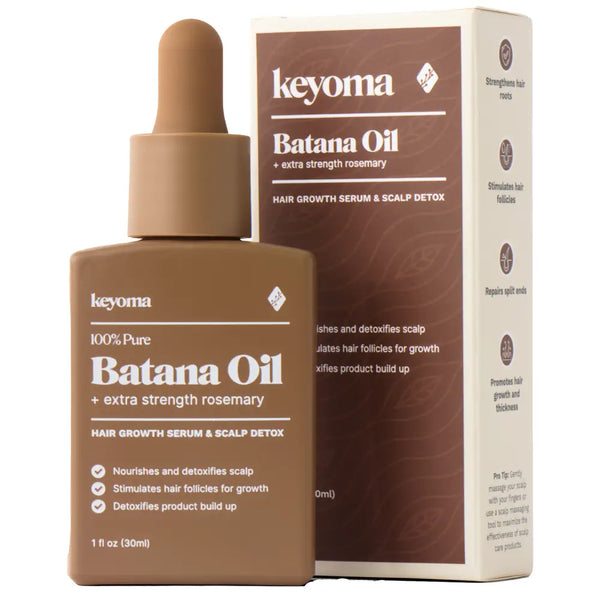
- 30-day supply $50
- 30% off for life $6
- Free haircare essentials kit $33
- Free custom wooden comb $10
- Free scalp massager $15
- Free eco-friendly travel bag $8
Your Cart
Your Cart is empty
Let's fix that
You might like...
Search our store


